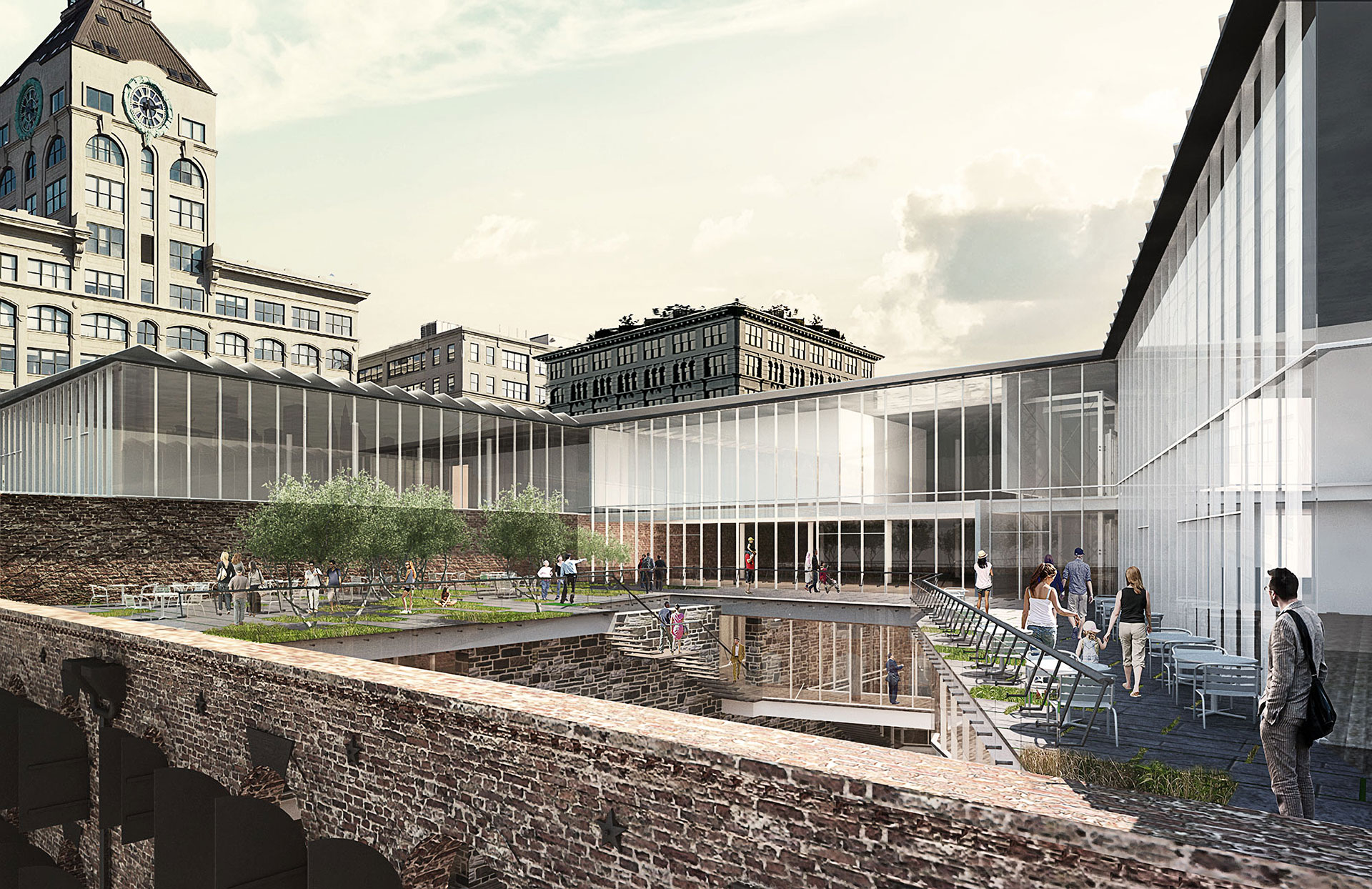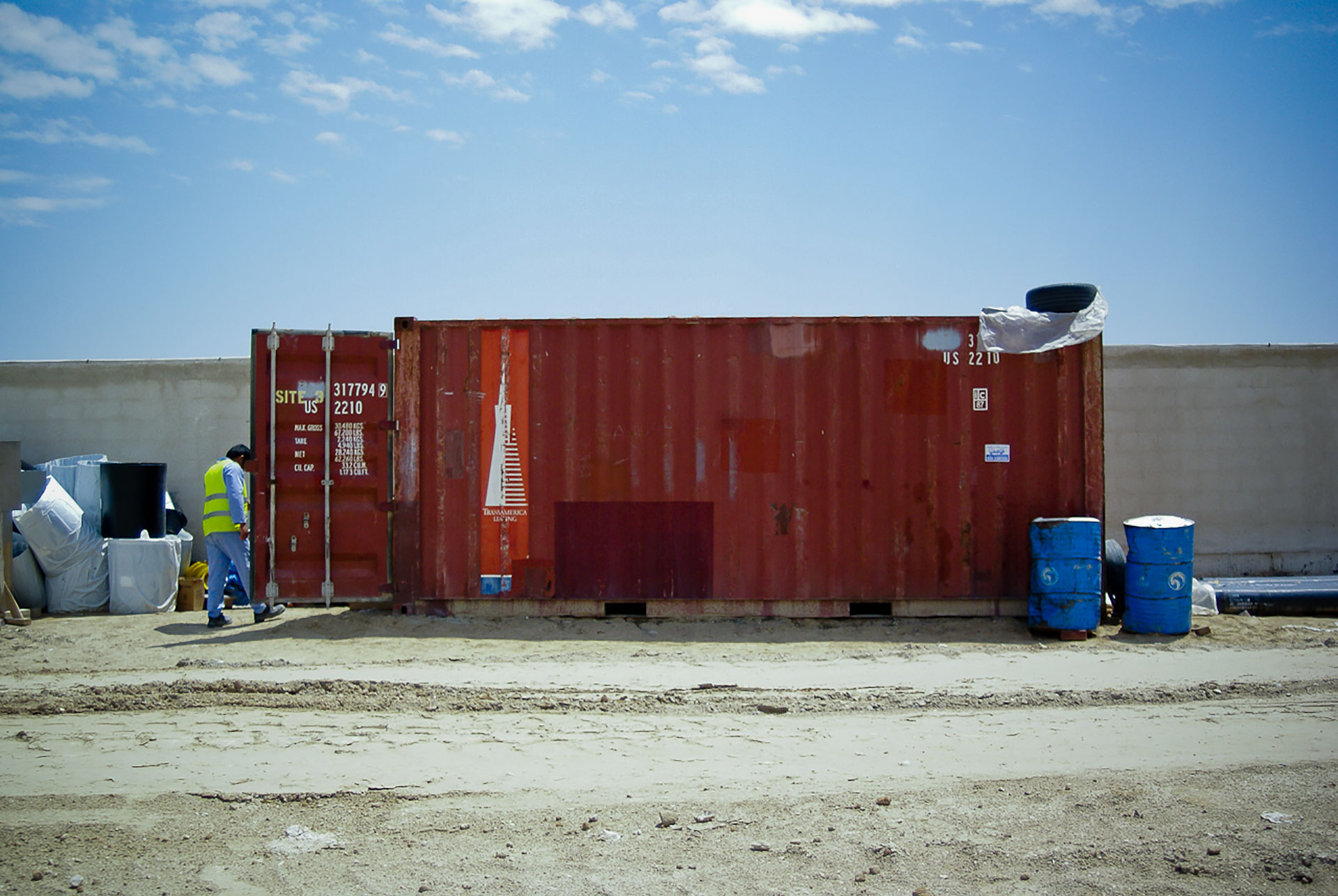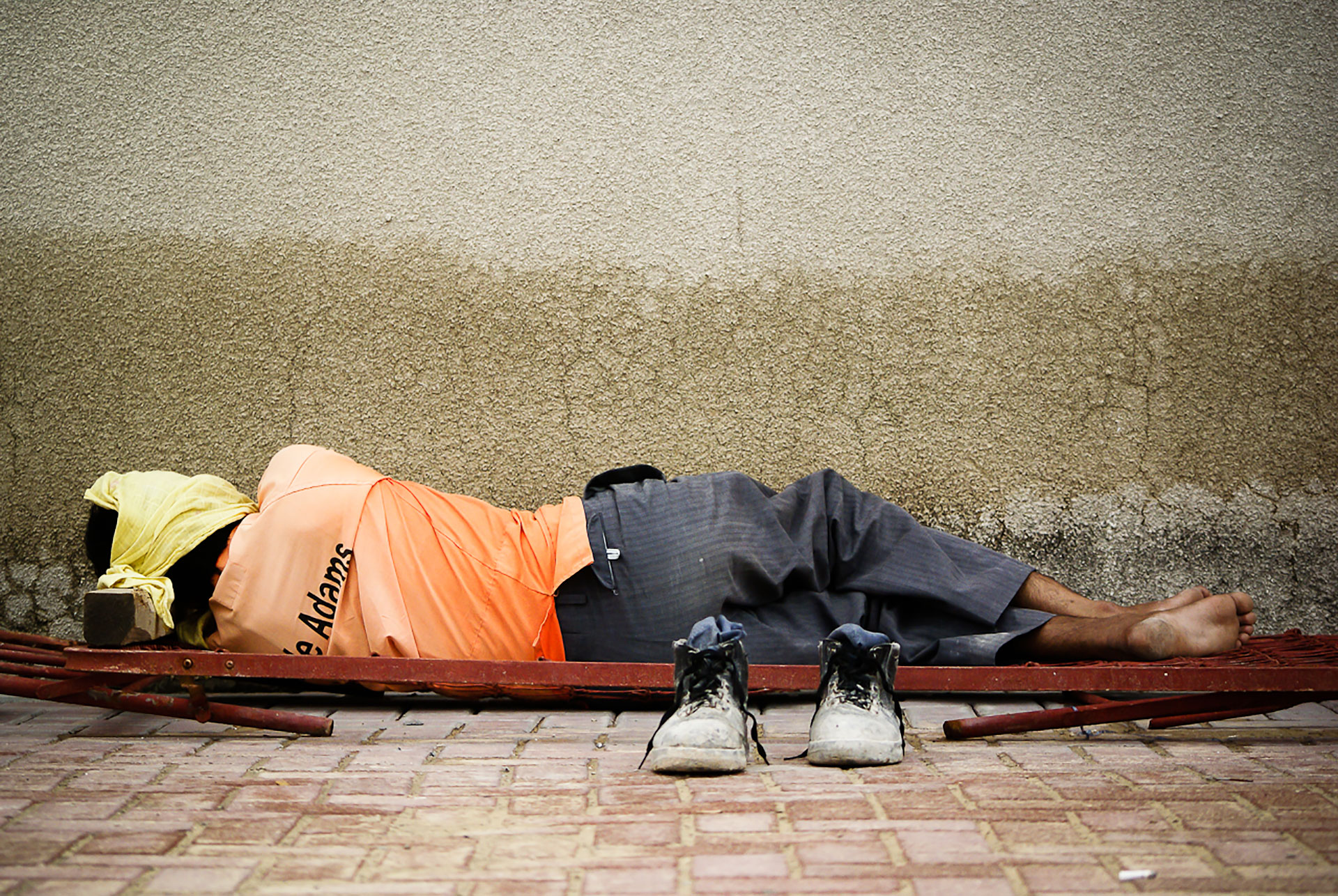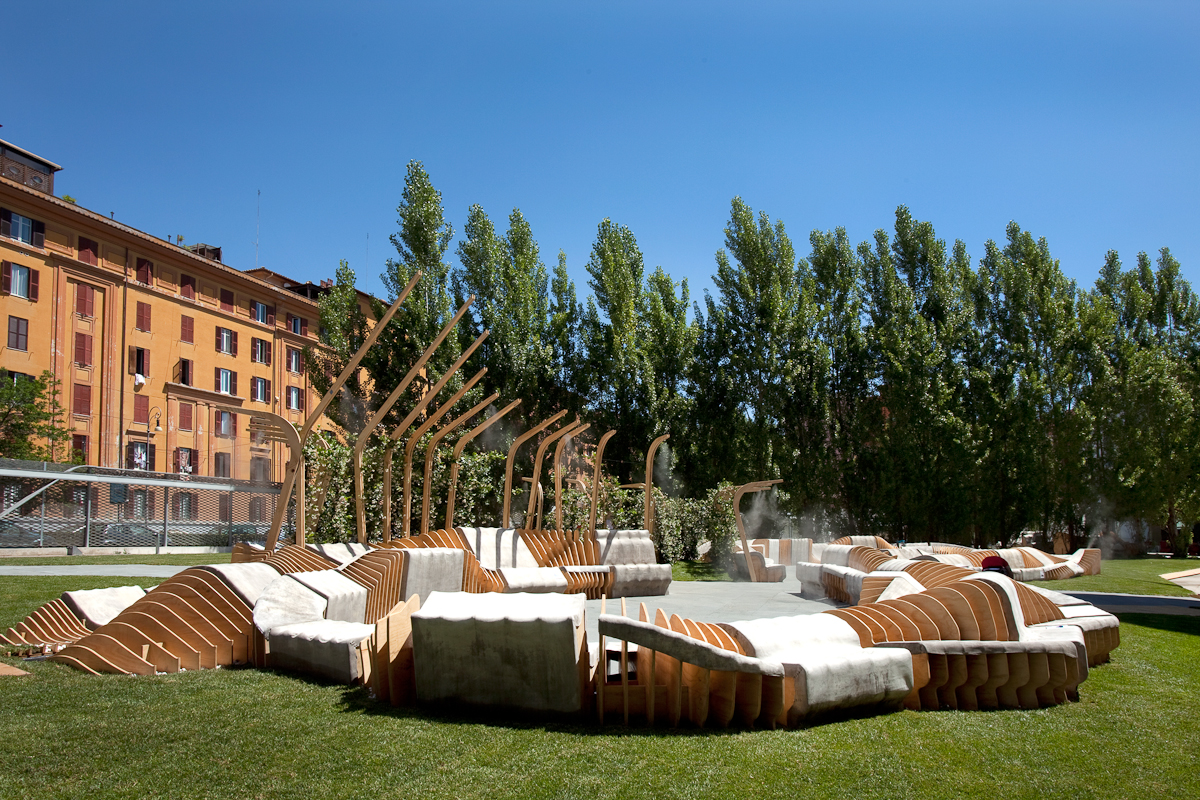Creative Evolution No. 10
Architect Michael Caton on designing interpretive communal spaces
Michael Canton is a Brooklynite and architect who designs commercial buildings as well as cultural institutions and public spaces. Traveling and living internationally over the years have informed his design perspective, including his current collaborative project (Rethinking Refugee Communities) with the United Nations High Commissioner for Refugees and Stanford University.
Tell us a little bit about yourself.
I am the son of Trinidadian immigrant parents. I am an architect on a mission to help communities discover and create spaces of possibility and imagination. I am a husband. I am a father. I am occasionally a DJ and a former podcast host. Lastly, I am an insatiably curious individual.
I consider myself a generalist architect. I work on a broad range of projects including cultural and academic institutions, installations, commercial and mixed-use buildings, residential, and strategic planning projects.

Where are you from and where do you live?
I’m from Brooklyn, New York, which is also where I currently live; however, my family and I are in the process of committing what Brooklynites would consider to be an act of treason– we are moving to Queens.
What’s one fun fact about you?
Every year, on New Year’s Day, my wife and I each write down two destinations in the world that we have never been to but have always dreamt of visiting. We take those pieces of paper, fold them up, put them into a hat, and then one of us picks out the destination that will be our big trip for the year.
What was your first travel experience and how did it affect you?
The first travel experience that affected me in a significant way was a trip to China in 2006. As part of an intensive summer design program I was there while Beijing was exploding with construction activity in preparation for the 2008 Summer Olympics. It was a transformative experience. Being from New York and studying the architecture around me, my world view was fairly New York-centric. I studied architecture from around the globe but this trip showed me how experiencing places first-hand offers radically different insights compared to reading about them through books and the Internet. Traveling through the city, experiencing its character, building relationships with Chinese students, and delving into Chinese cuisine and the art scene was a revelatory experience. I saw how life unfolds in distant cultures. The whole experience left me with a boundless desire for cultural discovery.
I had a particularly memorable and endearing experience in Pingyao, which is located in the Shanxi province. I was sitting on the curb working on a drawing in charcoal. Within minutes I was surrounded by a dozen excited children, all interested in me and my drawings. There was a mother holding a young child who was laughing hysterically. I don’t speak Mandarin, but she motioned to me to explain that her child thought that I’d gotten charcoal all over my body while drawing. It was extremely likely that I was one of the few (if not the first) black person these children had ever seen. It was endearing because children are so inspirational in the ways they confront differences, particularly in people. They are, more often than not, excited, curious, and inquisitive. Those children gave me a blueprint for how to deal with people outside of my, then, New York-centric universe.

Merge Studio
What are specific ways in which the place you live inspires the work you do?
What is interesting and inspirational about New York is the way in which the city is continuously reinventing itself. Because of geographical limitations, outward growth isn’t an option. Take the High Line, for example: It was an elevated industrial railway that carried cargo directly to buildings along Manhattan’s west side, which was truly unique. Today it has evolved into the High Line Park, which has repurposed the remaining parts of the structure and become a treasured public space. Of course, there are side-effects on the surrounding neighborhood. Whether those effects are good or bad is a matter of perspective, but the High Line is indicative of the beauty that is constantly unfolding in New York. This compels me to look for the transformative potential of any space.
I also spent time living both in Dubai and Geneva. Periods in both places were formative early in my career. The Swiss dedication to craft is particularly inspiring. In New York and Dubai, your work can, to some extent, be rough around the edges if it’s conceptually potent. In Switzerland that couldn’t have been further from the case. I remember producing highly conceptual proposals, or using very advanced digital design techniques in the office I worked for in Geneva. However, trying to elicit excitement from the senior designers in that way was like trying to draw blood from a stone. They valued elegance, clarity, and, above all, precision. It was a rude but pivotal awakening for me.
Pluralism–that a space, place, event, or thing, can and will hold many different meanings to those who engage with it–is an important part of my perspective on architecture and design.
How has that impacted your work?
The places where I have lived and travelled have functioned as extensions of the classrooms in which I was formally educated. I endeavor to develop architecture with rich conceptual narratives that manifest themselves as equally rich spatial experiences. I do this with an unwavering dedication to craft.
One example of this is Empire Stores in Brooklyn. The project is an adaptive repurposing of a former coffee storage warehouse on the edge of Brooklyn Bridge Park. The project’s site is indicative of the metamorphic beauty of New York that I mentioned earlier. The waterfront was once an industrial zone, incredibly unfriendly to pedestrians. As the New York City port industries have long since relocated, there has been an incredible transformation of waterfront neighborhoods across the city, coupled with highly energized advocacy for quality public spaces. The project’s agenda is to reveal the core of the building to the public via a courtyard. Additionally, we sought to transport a piece of Brooklyn Bridge Park above ground to a public roof garden. Surrounding the courtyard and roof garden are commercial and event spaces. The project breathes the life of public activity and private enterprise into a once docile storage facility.

Studio V Architecture
How would your work be different if you didn’t live in this place?
One thing that is incredibly important to my perspective on architecture and design is pluralism – That a space, place, event, or thing, can, and will, hold many different meanings to those that engage with it. Growing up in New York, this is a fact of life. It is difficult to imagine what my work, or my being, would be without this sensibility towards the plurality and nuances of urban life.
What are some other places or spaces you have visited that inspire your creativity?
Something that inspires me creatively are variations on the themes and narratives by which we live our lives. These narratives force me to look at each creative endeavor in earnest with fresh eyes. In that sense, every travel experience is an opportunity to discover yet another variation on how we, as human beings, live, play, work, convene, learn, define value, share culture, etc. Places that have been particularly inspiring to me are Mexico City, Mumbai, and Rome.
At home, the space that has for many years inspired me most is the park directly below the Brooklyn side of the Manhattan Bridge, along the East River. Today, Brooklyn Bridge Park’s Community Center is located there, but long before Brooklyn Bridge Park existing I would go there late at night and marvel at lower Manhattan from across the river. I was more inspired by all of the lights within the buildings than the architecture per se. It was my personal symbol of work ethic. It was incredibly ironic that years later I would be the project designer for the Empire Stores, which is located at that exact spot.

Constructing paradise.
Have you ever traveled somewhere that inspired you to create something? If so what did you create?
Spatial moments and details tend to stay with me from my travels. The interplay between these memories and my professional experiences allow me, ideally, to bring a particular, individual voice to my work. It excites me to think that the more I live, the more I explore, the more textured my voice as a designer becomes.
There is one especially memorable instance where I was directly inspired to create something due to the confrontation of two experiences of a place. While living in Dubai I shot a small photography project called ‘Constructing Paradise’ where I snuck into construction sites and photographed the construction workers. What compelled me to pursue this was the extremely difficulty I had as a young architect reconciling the ubiquitous presence of impoverished construction labor with the lavish expat lifestyle enjoyed by myself and others. I wanted to somehow give a visual presence to the workers whose hands were fulfilling the dreams of other, more powerful, enterprises. I moved to Geneva from Dubai in 2010. When I first arrived I stood on the balcony of my apartment astonished by the beauty of the clouds. It may sound silly but I hadn’t seen a cloud in almost two years. In Dubai it’s sunny and hazy year-round and rains just a handful of times, if you’re lucky. In Geneva, I took dozens of photographs of clouds, and I took the cloud and construction worker photographs and wrote a drawing algorithm that drew abstract portraits of the laborers from Dubai into the cloud images; part collage, part drawing. I called the series ‘Cloud Vision’.
Whether this project was a simple play on trying to spot figures in the clouds or emblematic of some sort of PTSD from my gulf experience, I don’t know.

Constructing paradise.

Are there places you’d like to visit that you imagine would inspire you?
Absolutely. I am eagerly anticipating the opportunity to visit Chile, Iran, Germany (specifically Berlin) and Nigeria.
How do you imagine visiting these places could inform your work?
Each of these places have cultural, political, and economic contexts that are, to varying degrees, significantly different from my everyday reality. In these places architecture and urbanism have developed, both historically and in a contemporary sense, due to, as opposed to in spite of, their context. I believe that the success of an architecture is explicitly linked to its relationship to its broader context. Learning from both the buildings and the cultural contexts that have enabled their construction reveal variations on the themes by which we all live our lives.
This is one of the aspects of being an architect that I am most passionate about. I am fortunate to work on projects locally and globally, and in every project it is imperative to distill and transform elements of its context into the finished space. As such, the role of the architect is always a hybrid; architect/economist, architect/anthropologist, architect/technologist, architect/historian, etc. In many ways the process of making architecture is about synthesis. Travel, in an immersive manner, significantly strengthens my ability in this regard.
I focus on memorable spatial moments and details from my travels. The interplay of these memories with my professional background allow me, ideally, to bring an
individual voice to my work.
Have you ever been to a place thinking it would influence your work in a certain way and then came out with a different outcome?
About nine months after graduating from architecture school I traveled to Mumbai, India with a friend who was from there. More the majority of my trip I’d insisted that we had to go to Dharavi, which is the second largest slum in Asia, but my friend continuously avoided my request. He just couldn’t imagine why I wanted to go there. Finally, on my last day in India, my friend’s driver took us to an entry point just outside of Dharavi. As far as I saw it’s not possible to drive through the majority of this area. My friend refused to get out of the car! Ultimately his driver and I took a walk through Dharavi. It was squalor unlike anything I had ever seen. However, what I found there was as a dynamic and vibrant community. I saw homes, barber shops, tiny bodega-like stalls, mechanic’s garages; all within this dense network of winding paths. It is an incredibly fascinating place. Like in Pingyao, after walking around for a short while I was surrounding by ecstatic children, whose English by the way was some of the best I’d encountered while traveling throughout the country.
I’d researched Dharavi as a student, which explains my keen interest in the place. However my main take-away from my experience in Dharavi was that design in an ivory tower just doesn’t work, irrespective of one’s intentions. Admittedly, this sounds like an inane point, but this realization, through such a visceral experience, quickly undermined quite a bit of my architectural training. It caused me to shift my attitude towards the significance of place and the development of architecture.

What is a recent project you’ve worked on that relates to space, place or community?
At Ennead Architects, where I currently work, I have been fortunate to be part of a project in collaboration with the United Nations High Commissioner for Refugees (UNHCR) and Stanford University, Rethinking Refugee Communities. Unlike a typical architecture project where the goal may be a building or space, we are collaborating on the development of a design process.
Refugee settlement planning is a universe of unfathomable constraints; the biggest constraint typically being a severe lack of time. Simultaneously, the stakes of such planning efforts are extraordinarily high. The UNHCR aides the most vulnerable peoples on the planet. Our role in this project is to aid their settlement planners. We are developing a toolkit that provides a holistic planning methodology for the analysis of potential refugee settlement sites, the evaluation of the potential for host and refugee community integration, and best practices for site design.
This is not to suggest that the UNHCR does not currently address these issues. However, there has been a social awakening that refugee settlements, while built as temporary environments, are anything but temporary. There are generations of children born in refugee settlements. Often playgrounds and social spaces are not provided for, under the hypothesis of host nations that they are superfluous in a temporary shelter situation, and project a sense of permanence. One of the project’s goals is to augment the negotiation process with an objective analytical framework that aims to make the case for integrated communities, resource sharing, and spaces beyond the explicit domain of shelter.

Urban Movement Design, Photograph by Cecilia Fiorenza

Urban Movement Design
Title Image: Unite/Unire (Urban Movement Design). Read more about Michael’s work here.